You’ll need to start by selecting simulation software like Arena or FlexSim that integrates with your existing systems, then collect real-time performance data and engage operators to map current processes. Set up high-performance VR hardware with premium headsets and powerful graphics cards, ensuring adequate network infrastructure. Train your team through hands-on practice and mentorship programs while establishing KPIs to measure efficiency gains. This strategic approach will unleash the full potential of your simulation investment.
Selecting the Right Manufacturing Simulation Software for Your Enterprise
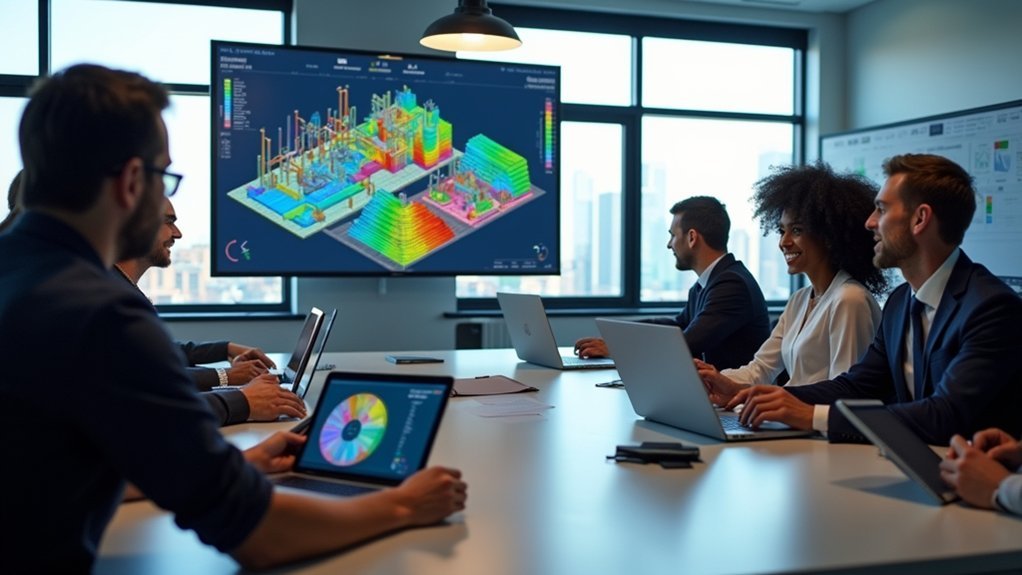
When you’re ready to transform your manufacturing operations through simulation, selecting the right software becomes your most critical decision.
You’ll need to evaluate whether your enterprise requires discrete event simulations for assembly lines or agent-based modeling for complex production scenarios.
Leading simulation software includes Arena for statistical analysis, FlexSim for 3D visualization, and Simio for object-oriented approaches.
Verify your chosen platform integrates seamlessly with existing systems for accurate real-time monitoring and Digital Twin capabilities.
Look for user-friendly interfaces that enable team members to build simulation models without coding expertise.
Prioritize solutions supporting Lean manufacturing principles and resource allocation optimization.
The right software will enhance process improvement initiatives while delivering measurable ROI through data-driven insights.
Data Collection and Process Mapping for VR Implementation
After you’ve selected your simulation software, accurate data collection becomes the foundation for successful VR implementation in your manufacturing environment.
You’ll need real-time performance metrics and historical data for effective simulation modeling. Engage your operators directly—they’ll provide essential insights into bottlenecks and inefficiencies that data alone can’t reveal.
Implement the Gemba concept by observing operations on the shop floor where actual work happens. Use video recordings to capture detailed timing and movement patterns that identify delays and accumulation points.
Go to the Gemba—observe where real work happens to capture authentic timing patterns and workflow inefficiencies.
Your process mapping should include thorough flowcharts visualizing operation sequences and interdependencies.
This combination of quantitative data collection and qualitative observations guarantees your VR simulation accurately reflects real-world conditions, creating a reliable foundation for identifying improvement opportunities.
Setting Up Virtual Reality Hardware and Infrastructure Requirements
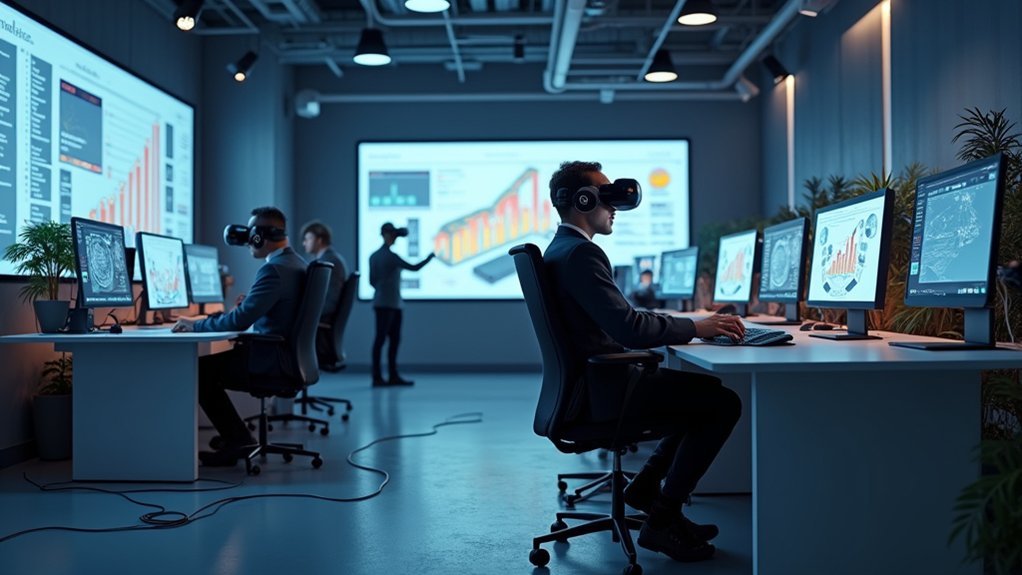
How can you guarantee your VR manufacturing simulation runs smoothly without technical bottlenecks?
You’ll need robust hardware requirements starting with high-performance graphics cards like NVIDIA GeForce RTX 2060 or better to handle complex 3D visualizations. Your network infrastructure must support real-time data streaming with high bandwidth and low latency for seamless immersive simulations.
Essential VR equipment setup includes:
- Premium VR headsets with motion tracking capabilities (Oculus Rift, HTC Vive) for realistic user experiences
- Powerful computer systems with dedicated graphics processing to render manufacturing simulation environments
- High-speed network connections ensuring uninterrupted data flow during virtual reality sessions
- Motion capture systems and additional sensors for enhanced real-time interaction and feedback
Don’t forget implementing safety measures including proper physical clearances and thorough user training protocols to maintain secure working environments around VR equipment.
Training Team Members on Manufacturing VR Simulation Tools
Three critical phases define successful VR simulation training: technical onboarding, hands-on practice, and continuous skill development. You’ll maximize team competence by implementing hands-on sessions where members actively engage with manufacturing VR simulation tools, learning virtual modeling and process optimization techniques through direct experience.
Interactive simulations with immersive 3D visualizations dramatically improve retention rates—participants remember 80% of content versus 20% from traditional lectures. You should provide extensive training resources including user manuals, video tutorials, and online forums to support continuous learning.
| Training Component | Method | Benefit |
|---|---|---|
| Technical Skills | Interactive simulations | 80% retention rate |
| Mentorship | Experienced user guidance | Accelerated learning |
| Assessment | Feedback sessions | Skill validation |
Establish a mentorship program pairing experienced users with newcomers, and schedule regular assessment and feedback sessions for ongoing development.
Measuring Performance and Optimizing Simulation Workflows
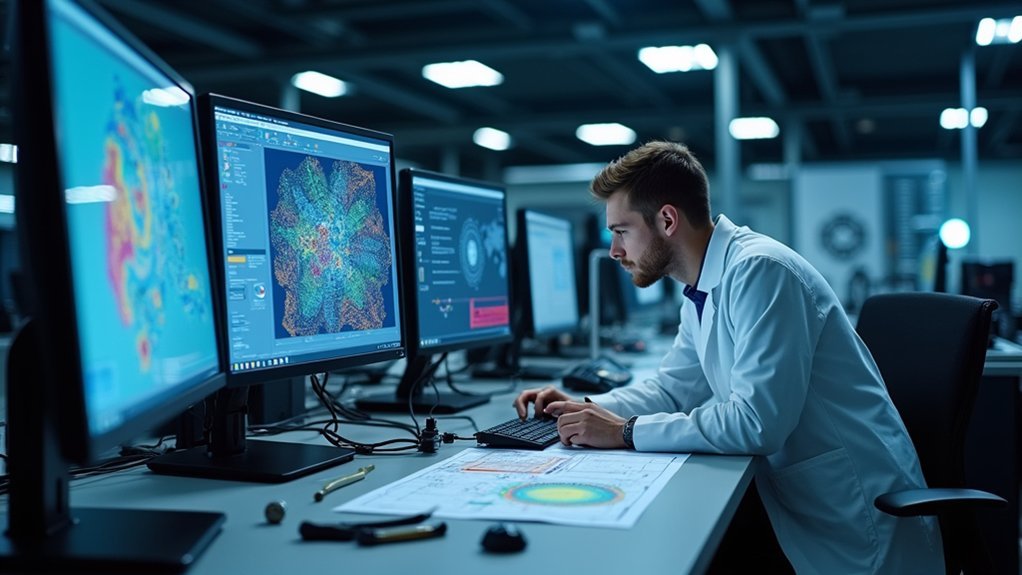
While training establishes your team’s foundation with VR simulation tools, measuring performance transforms these platforms into strategic optimization engines that drive continuous improvement.
You’ll need strategic performance indicators that align with your operational goals, enabling accurate assessment of resource utilization, throughput, and overall efficiency.
Real-time data integration during simulation workflows enhances measurement accuracy, letting you immediately identify bottlenecks and improvement opportunities.
Through iterative testing, you can achieve 30-40% reductions in project planning time while rapidly evaluating multiple scenarios.
- Establish KPIs that directly measure efficiency, throughput, and resource utilization across production systems
- Integrate real-time data feeds for immediate bottleneck identification and workflow optimization opportunities
- Implement continuous parameter monitoring for dynamic responses to changing production conditions
- Analyze simulation results to generate actionable insights that reduce waste and improve operational efficiency
Frequently Asked Questions
What Is Any One Simulation Software Used for Manufacturing Applications?
You can use FlexSim for manufacturing applications. It’s designed specifically for manufacturing with drag-and-drop interface, 3D visualization, real-time analysis, and built-in reporting tools that’ll help you identify bottlenecks and optimize processes.
What Is a Manufacturing Simulation?
You’ll use manufacturing simulation as a computer-based modeling technique that lets you analyze and optimize production systems by virtually testing processes like inventory management, assembly, and transportation before implementing changes.
How Do You Process Simulation Techniques?
You’ll process simulation techniques by selecting the appropriate method—DES for discrete events, ABM for agent interactions, or SD for continuous processes—then integrating real-time data and machine learning to enhance accuracy.
What Is the Best Software for Simulation?
You’ll find Arena’s the best for discrete event simulation with advanced statistics, while FlexSim offers superior 3D visualization. Choose Simio if you need object-oriented modeling and analytics integration.

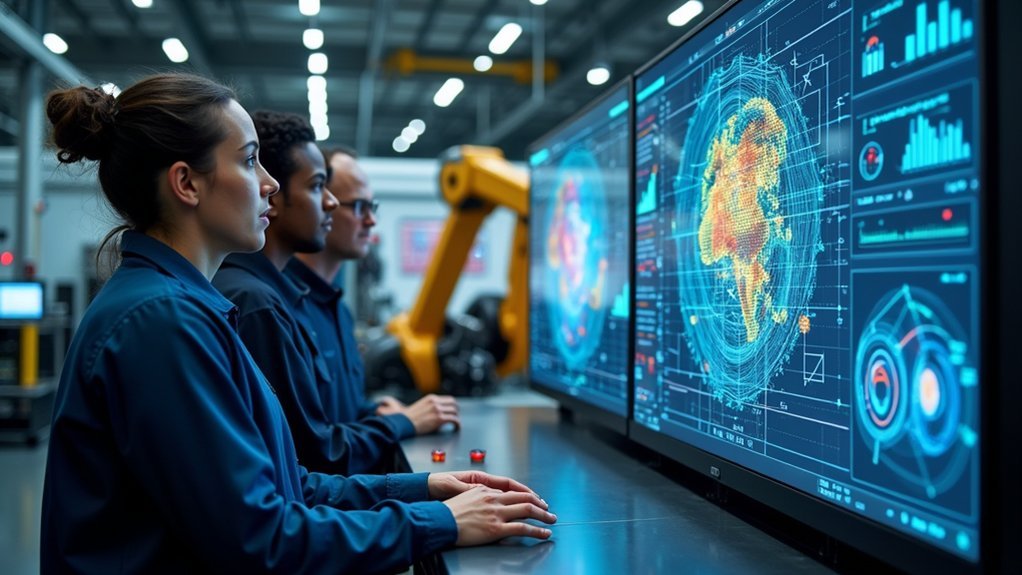

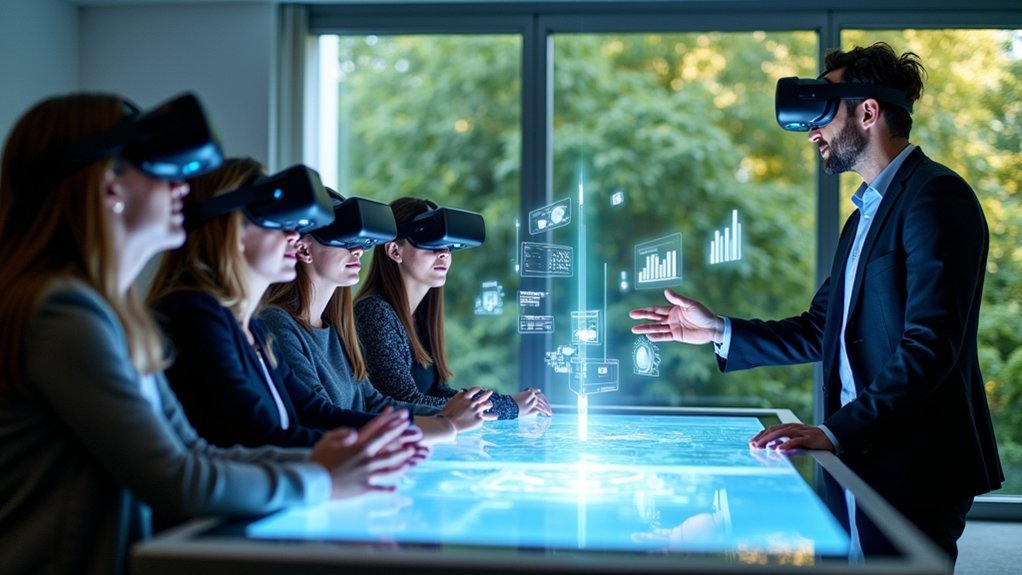
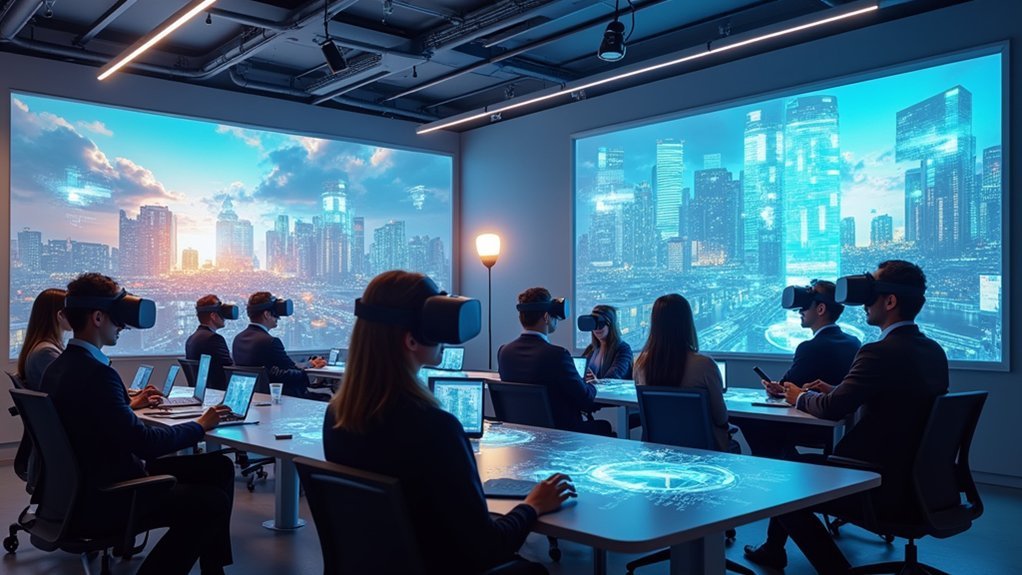
Leave a Reply